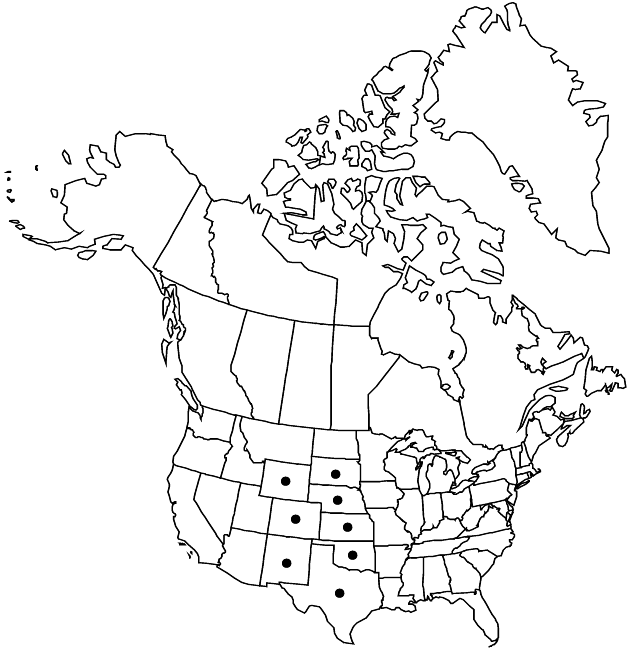Difference between revisions of "Hymenopappus tenuifolius"
Fl. Amer. Sept. 2: 742. 1813.
FNA>Volume Importer |
FNA>Volume Importer |
||
| Line 46: | Line 46: | ||
|publication year=1813 | |publication year=1813 | ||
|special status= | |special status= | ||
| − | |source xml=https://jpend@bitbucket.org/aafc-mbb/fna-data-curation.git/src/ | + | |source xml=https://jpend@bitbucket.org/aafc-mbb/fna-data-curation.git/src/8f726806613d60c220dc4493de13607dd3150896/coarse_grained_fna_xml/V19-20-21/V21_782.xml |
|tribe=Asteraceae tribe Heliantheae | |tribe=Asteraceae tribe Heliantheae | ||
|subtribe=Asteraceae (tribe Heliantheae) subtribe Hymenopappinae | |subtribe=Asteraceae (tribe Heliantheae) subtribe Hymenopappinae | ||
Revision as of 15:37, 18 September 2019
Biennials, 40–150 cm. Leaves 2-pinnate, 8–15 cm, lobes (3–)5–15+ × 0.5–1.5+ mm; cauline 8–30. Heads 20–200 per stem. Pedun-cles 1–5 cm. Phyllaries yellowish, 5–8 × 2–4 mm. Ray florets 0. Disc florets 25–50; corollas whitish, 2.5–3 mm, tubes 1.5–2.2 mm, throats campanulate, 0.8–1.5 mm, lengths 1.5–2 times lobes. Cypselae 3.5–4.5 mm, ± villous; pappi of 16–18 scales 1–1.5(–2) mm. 2n = 34.
Phenology: Flowering (Apr–)May–Jul(–Aug).
Habitat: Sandy, gravelly, or silty soils, limestone
Elevation: 50–2100 m
Distribution

Colo., Kans., Nebr., N.Mex., Okla., S.Dak., Tex., Wyo.
Discussion
Selected References
None.
Lower Taxa
None.